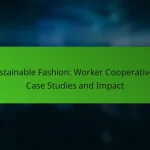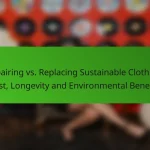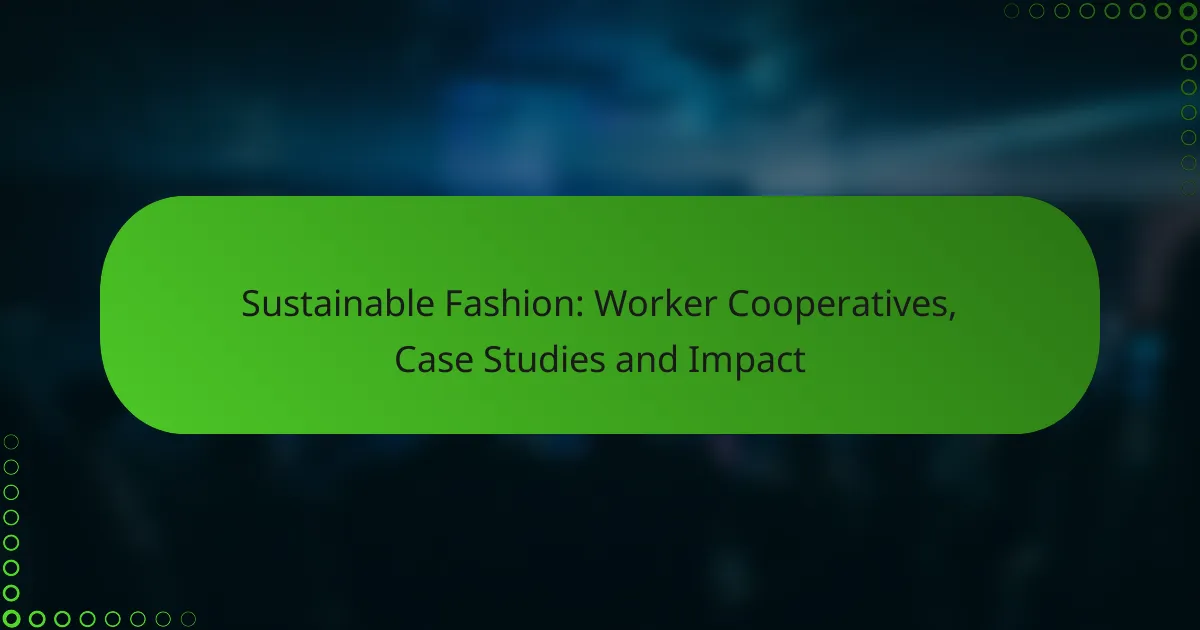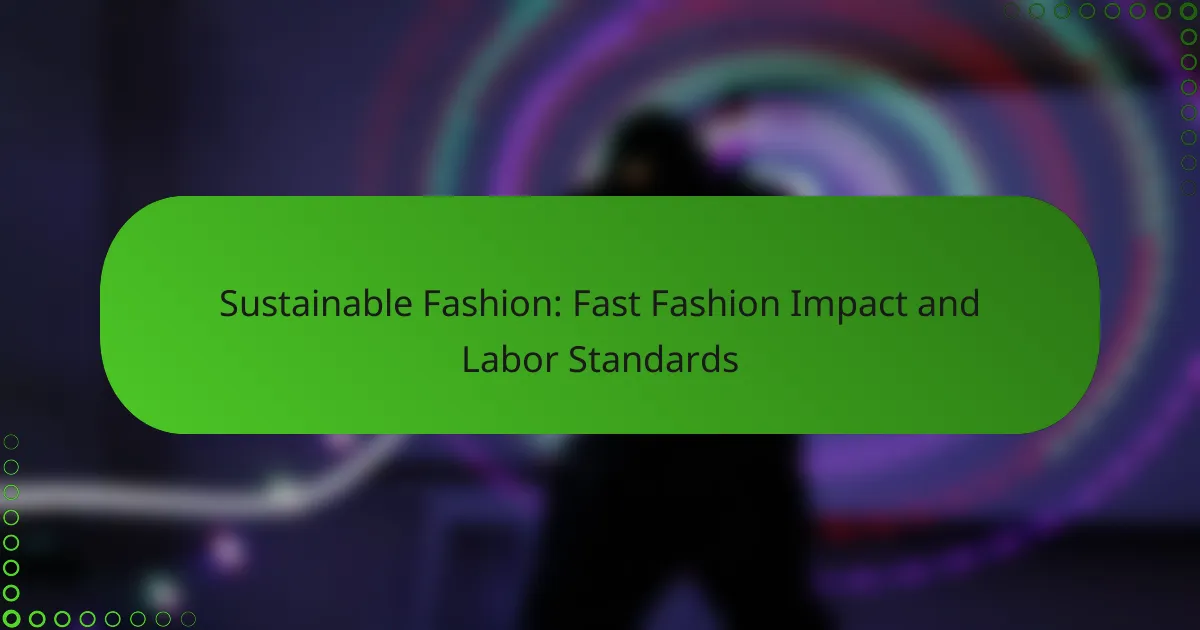Sustainable fashion relies heavily on supply chain transparency, empowering consumers to make informed purchasing decisions. By openly sharing their sourcing and manufacturing processes, brands can promote a more ethical fashion industry. This transparency not only enhances consumer awareness but also encourages responsible practices throughout the production cycle.
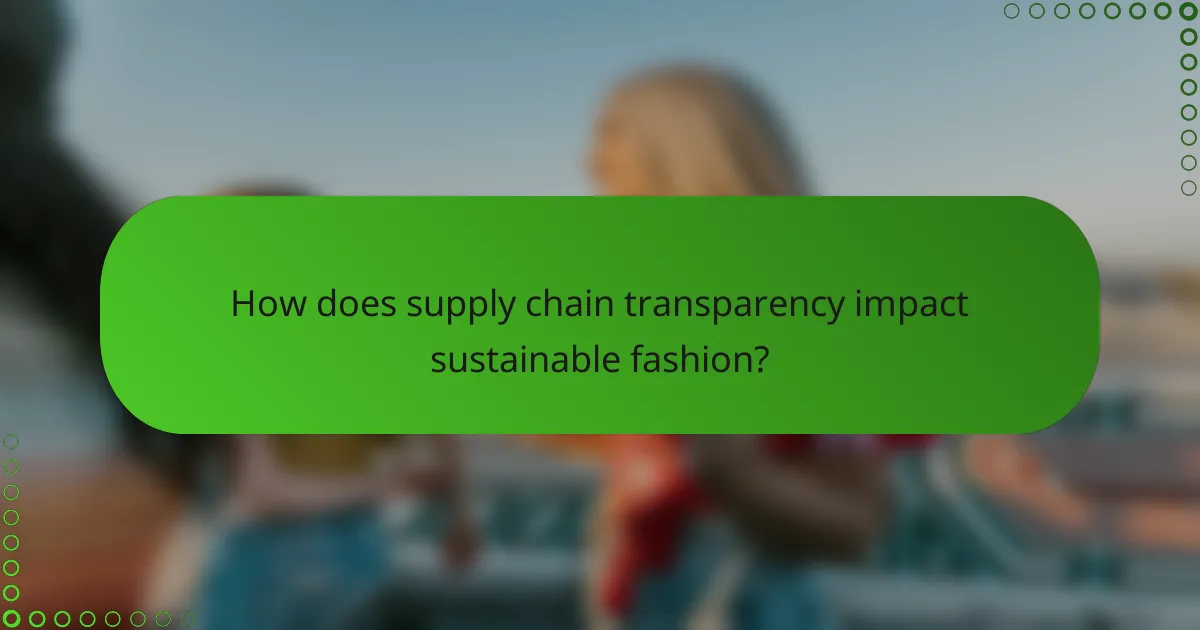
How does supply chain transparency impact sustainable fashion?
Supply chain transparency significantly influences sustainable fashion by enabling consumers to make informed choices about the products they buy. When brands openly share their sourcing and manufacturing processes, it fosters a more responsible and ethical fashion industry.
Increased consumer trust
Transparency in the supply chain builds consumer trust by allowing shoppers to verify the ethical practices of brands. When consumers know where and how their clothing is made, they are more likely to support those brands, leading to increased loyalty and repeat purchases.
For example, brands that provide detailed information about their sourcing, labor practices, and environmental impact often see higher customer satisfaction. This trust can translate into a competitive advantage in a crowded market.
Enhanced brand accountability
Supply chain transparency enhances brand accountability by holding companies responsible for their practices. When brands disclose their supply chain details, they are more likely to adhere to ethical standards and regulations, as consumers and watchdog organizations can scrutinize their actions.
Brands that fail to meet their stated commitments may face public backlash, which can harm their reputation and sales. This accountability encourages companies to adopt more sustainable practices and improve their overall impact on the environment.
Reduction in environmental impact
Transparent supply chains can lead to a reduction in environmental impact by promoting sustainable sourcing and production methods. When brands disclose their practices, they are often pressured to minimize waste, reduce carbon emissions, and use eco-friendly materials.
For instance, companies that track and report their resource usage can identify areas for improvement, such as switching to renewable energy sources or reducing water consumption. This proactive approach not only benefits the planet but can also result in cost savings for the brand.

What are the best practices for achieving supply chain transparency?
Achieving supply chain transparency involves clear visibility into every stage of production, from raw materials to finished products. Best practices include leveraging technology, conducting audits, and partnering with suppliers committed to ethical standards.
Implementing blockchain technology
Blockchain technology enhances supply chain transparency by providing a secure and immutable record of transactions. Each step in the supply chain can be documented, allowing consumers to trace the origin of materials and verify claims about sustainability.
For example, brands can use blockchain to show the journey of organic cotton from farm to factory, ensuring that every participant adheres to ethical practices. This technology can significantly reduce fraud and increase consumer trust.
Conducting regular audits
Regular audits are essential for maintaining supply chain transparency. These audits can help identify areas of non-compliance with ethical standards and ensure that suppliers meet agreed-upon criteria.
Companies should schedule audits at least annually and consider unannounced visits to get an accurate picture of operations. Engaging third-party auditors can provide an unbiased assessment and enhance credibility with consumers.
Collaborating with ethical suppliers
Partnering with suppliers who prioritize ethical practices is crucial for achieving transparency. This collaboration can include sharing information about sourcing, labor conditions, and environmental impact.
Brands should establish clear criteria for selecting suppliers, focusing on those who demonstrate commitment to sustainability and fair labor practices. Building long-term relationships with these suppliers can foster accountability and improve overall supply chain integrity.
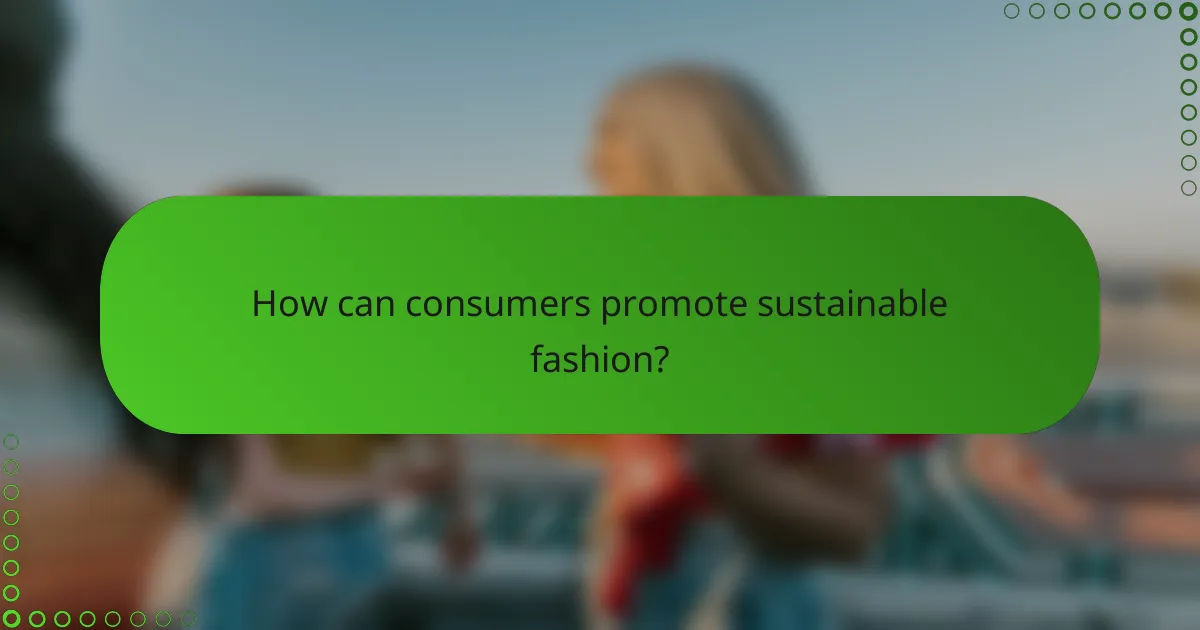
How can consumers promote sustainable fashion?
Consumers can promote sustainable fashion by making informed choices that support eco-friendly practices and transparency in the supply chain. By selecting brands that prioritize sustainability, supporting local artisans, and engaging in clothing swaps, individuals can significantly impact the fashion industry’s environmental footprint.
Choosing eco-friendly brands
Selecting eco-friendly brands is a crucial step in promoting sustainable fashion. Look for companies that use organic materials, implement fair labor practices, and minimize waste in their production processes. Certifications such as Global Organic Textile Standard (GOTS) or Fair Trade can help identify brands committed to sustainability.
Consider the lifecycle of the products you purchase. Brands that offer repair services or recycling programs demonstrate a commitment to reducing waste. Researching a brand’s supply chain transparency can also provide insight into their environmental and ethical practices.
Supporting local artisans
Supporting local artisans helps sustain communities and reduces the carbon footprint associated with transporting goods. By purchasing handmade items, consumers can ensure that their money goes directly to skilled craftspeople who often use sustainable materials and traditional techniques.
Explore local markets, craft fairs, or online platforms that connect consumers with artisans. This not only promotes sustainable fashion but also fosters a sense of community and appreciation for unique, culturally significant pieces.
Participating in clothing swaps
Clothing swaps are an effective way to refresh your wardrobe sustainably. By exchanging items with friends or participating in community events, you can give new life to clothes you no longer wear while acquiring new pieces without contributing to overproduction.
Organize a swap by inviting friends or joining local groups focused on sustainable fashion. Ensure that the items exchanged are in good condition and suitable for the season, which helps maintain a high standard and encourages participants to be mindful of their choices.

What role do certifications play in sustainable fashion?
Certifications in sustainable fashion serve as crucial indicators of a brand’s commitment to ethical and environmentally friendly practices. They help consumers identify products that meet specific sustainability standards, promoting transparency and accountability in the fashion supply chain.
Verification of ethical practices
Certifications verify that brands adhere to ethical practices throughout their supply chains. Common certifications include Fair Trade, Global Organic Textile Standard (GOTS), and OEKO-TEX, which assess labor conditions, environmental impact, and product safety. Brands with these certifications often undergo regular audits to ensure compliance.
For example, a GOTS-certified garment must contain at least 70% organic fibers and meet strict environmental criteria during production. This verification process helps consumers trust that their purchases support fair labor and sustainable practices.
Consumer education on standards
Certifications also play a vital role in educating consumers about sustainability standards. By understanding what different certifications mean, shoppers can make informed choices that align with their values. Resources like the Sustainable Apparel Coalition’s Higg Index provide insights into the environmental and social impacts of clothing.
To enhance awareness, brands often share information about their certifications on product labels and websites. Consumers should look for easily recognizable logos and familiarize themselves with the criteria behind these certifications to avoid greenwashing.

How can brands communicate their sustainability efforts?
Brands can effectively communicate their sustainability efforts by being transparent about their practices and engaging consumers through various channels. Clear messaging and accessible information help build trust and awareness among consumers regarding sustainable fashion.
Utilizing social media platforms
Social media platforms are powerful tools for brands to showcase their sustainability initiatives. By sharing behind-the-scenes content, brands can illustrate their commitment to ethical practices, such as eco-friendly materials or fair labor conditions.
Engagement is key; brands should encourage discussions and respond to consumer inquiries about their sustainability efforts. This interaction not only informs consumers but also fosters a community around shared values.
Creating transparent product labels
Transparent product labels provide essential information about the sustainability of fashion items. Brands should include details such as material sources, production processes, and certifications to help consumers make informed choices.
Labels can also highlight sustainability claims, such as organic or recycled materials, and indicate compliance with recognized standards. Clear labeling helps consumers quickly assess the environmental impact of their purchases, promoting responsible buying behavior.

What are the challenges in achieving supply chain transparency?
Achieving supply chain transparency is hindered by various challenges, including the intricate nature of global supply chains and insufficient industry regulations. These obstacles complicate efforts to trace the origins of materials and ensure ethical practices throughout the production process.
Complexity of global supply chains
The complexity of global supply chains arises from the numerous stakeholders involved, spanning multiple countries and industries. Each link in the chain, from raw material suppliers to manufacturers and retailers, can introduce variability in practices and standards.
For instance, a garment may be produced using textiles sourced from different regions, each with distinct labor laws and environmental regulations. This interconnectedness makes it difficult for brands to monitor and verify compliance with ethical standards.
Lack of industry regulations
The absence of comprehensive regulations in the fashion industry further complicates supply chain transparency. While some countries have implemented guidelines, many regions lack enforceable standards, allowing unethical practices to persist.
Without a unified regulatory framework, brands may struggle to ensure that their suppliers adhere to sustainable practices. This gap can lead to consumer mistrust and a reluctance to support brands that do not provide clear information about their supply chains.

What are the emerging trends in sustainable fashion?
Emerging trends in sustainable fashion focus on enhancing supply chain transparency and fostering consumer awareness. These trends aim to reduce environmental impact and promote ethical practices throughout the fashion industry.
Rise of circular fashion models
Circular fashion models prioritize the lifecycle of clothing, emphasizing reuse, recycling, and sustainable production methods. Brands are increasingly adopting practices that allow garments to be returned, repaired, or repurposed, minimizing waste and resource consumption.
For example, companies like Patagonia and H&M have introduced take-back programs, encouraging customers to return used items for recycling or resale. This shift not only reduces landfill waste but also fosters a culture of sustainability among consumers.
Integration of AI in supply chain management
The integration of artificial intelligence (AI) in supply chain management is transforming how fashion brands operate. AI technologies enhance transparency by providing real-time data on sourcing, production, and distribution, enabling brands to make informed decisions that align with sustainability goals.
For instance, AI can optimize inventory management, reducing overproduction and waste. By analyzing consumer trends and preferences, brands can better align their offerings with demand, leading to more sustainable practices and improved efficiency.



